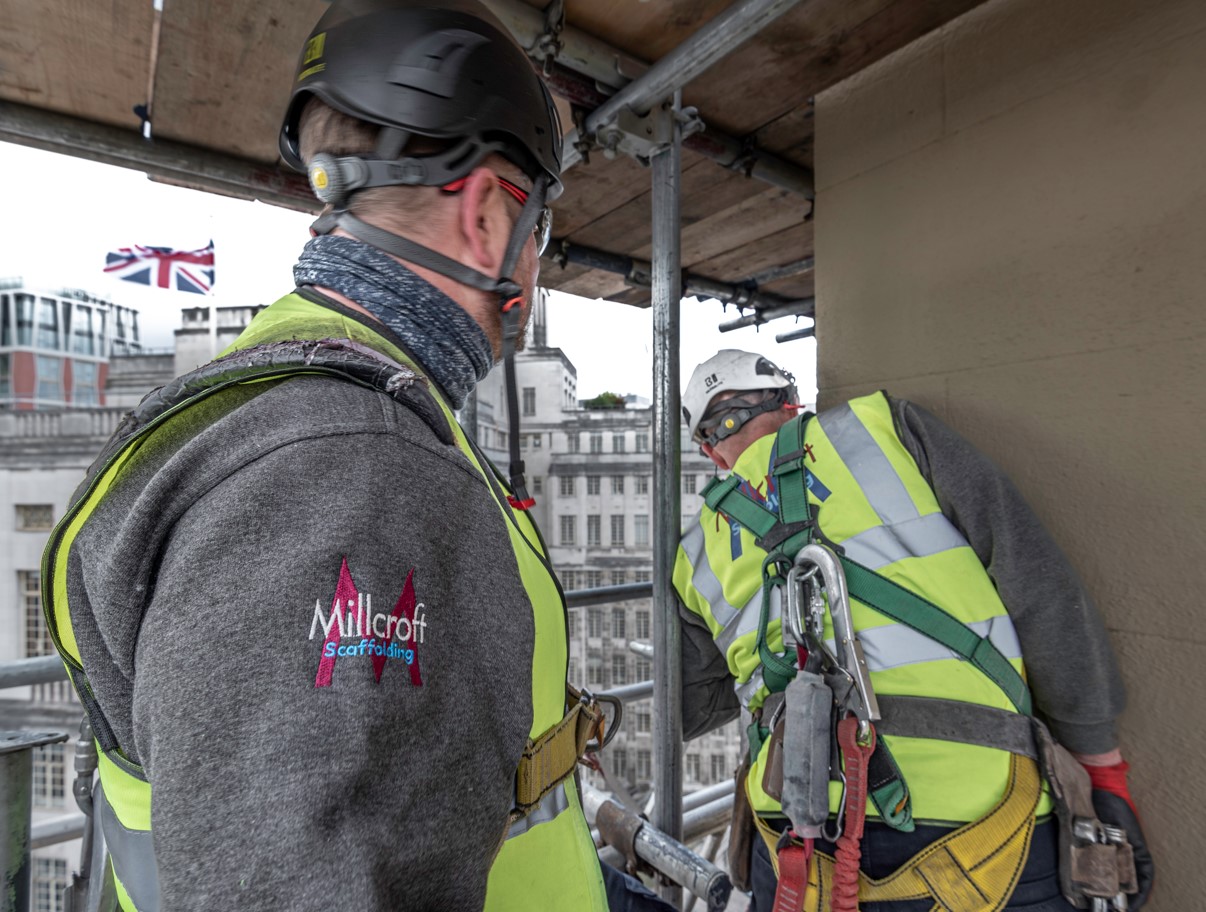Millcroft Managing Director, Billy Jones, discusses how health and safety reforms have been instrumental in the evolution of PPE in scaffolding.
In construction, few things are as vital as workers' safety. But this has not always been the case.
We've all seen the iconic photos of construction workers balancing precariously while building the Empire State Building. Some in the industry, like me, might even remember relying on our acrobatic skills to stay safe.
Thankfully, attitudes have changed and over the years we have seen a significant transformation to our approach to health and safety in the UK construction industry. This is particularly evident our sector, scaffolding. As scaffolding technology and designs have evolved, so too have the regulations and requirements surrounding personal protective equipment (PPE).
The 1970s: Laying the foundations
The 1970s saw the development of a comprehensive health and safety framework in the UK, with the Health and Safety at Work etc (HSW) Act 1974 playing a pivotal role. The HSW Act is an enabling act which means it is law and enables other regulations to be made and enforced under it. Under the Act, employers must protect all employees 'health, safety and welfare' at work. This legislation laid the foundation for subsequent reforms in the construction sector, including in our industry. During this era, basic PPE, such as hard hats and safety boots, were introduced, providing rudimentary protection for scaffolders.
The 1980s and 1990s: Awareness and advancement
As awareness of construction industry hazards grew, so did the demand for more specialised PPE. Harnesses and fall arrest systems became standard, offering scaffolders a lifeline against potentially fatal falls. Additionally, safety helmets evolved to provide better shock absorption and visibility. Standards such as BS EN 397 started to be introduced, which specify the physical and performance requirements, including testing, for industrial safety helmets to ensure they protect workers on site. The aim of this standard is to ensure helmets are designed specifically to protect the wearer from falling objects on site.
1992 was a seminal moment with the introduction of the Personal Protective Equipment at Work Regulations (amended in 2022). These regulations marked a significant step forward in emphasising the employer's responsibility to provide, free of charge, suitable PPE for their workforce.
The 2000s: Work at height becomes safer
The early 2000s marked a significant milestone with the introduction of the Work at Height Regulations (WAHR) 2005. This legislation specifically targets risks and hazards associated with working at height, including scaffolding. The regulations emphasise the importance of thorough risk assessments, proper planning and the use of suitable PPE. This includes requiring scaffolders to use fall arrest harnesses when other safety measures are not present to protect them. The worker should be attached to a suitable anchor point above the working platform with a fixed-length lanyard to minimise the fall distance in the event of a fall incident.
This focus on PPE further elevated its significance, and as a result, we saw advancements in lanyards, harnesses and other fall protection equipment to comply with the new regulations.
Since its introduction in 2005, WAHR has effectively reduced fatalities. In the year before it became law (2003-2004), falls from height accounted for 67 fatal accidents. Statistics for 2021-2022 show that these have reduced to 29 fatalities.
The 2010s: Customisation and comfort
Harnesses until now tended to be cumbersome and heavy, but during the 2010s personalisation and comfort took centre stage. PPE manufacturers started producing workwear and kits easily adjusted to individual body types. This ensured a snug fit that didn't compromise safety. The enhanced ergonomic design made wearing it more comfortable for extended periods, encouraging greater worker compliance.
As well as accommodating different body sizes, we started to see more PPE manufactured specifically for women. Until now, women had to wear PPE such as safety boots, gloves and harnesses made for men. This resulted in ill-fitting and uncomfortable PPE, which women workers often didn't' wear, increasing the risk of injury.
The 2020s: Smart and sustainable solutions
As we entered the current decade, smart technology started to make its way onto the construction site. Smart helmets and augmented reality (AR) capabilities began to emerge, providing real-time information and enhancing communications between workers. Smart helmets are becoming more common on construction sites, with some providing vital information on a worker's heart rate or temperature or alerting the user to a potential hazard on site.
Sustainability has also become a key consideration, with PPE manufacturers exploring eco-friendly materials and designs to minimise environmental impact. This has resulted in options such as bio-degradable gloves, recycled waste safety vests and safety glasses made from recycled polycarbonate.
Challenges and overcoming resistance
Health and safety reforms in scaffolding have been challenging. Resistance to change from some corners of the industry has often stemmed from concerns about increased costs, workflow disruption, and scepticism about the effectiveness of new PPE.
The challenge for us at Millcroft, and I’m sure we’re no different from other scaffolding companies, has been educating our people, particularly the more experienced guys. Sometimes people get set in their ways, so getting them to understand the need to do things differently and meet new regulations and protocols can take time. However, as incidents decrease and benefits of enhanced safety become evident, these challenges are diminishing.
What do the next 50 years hold?
Looking back at the past 50 years of health and safety reforms in scaffolding in the UK, there has been a remarkable transformation in the landscape of PPE. From humble beginnings of hard hats and safety boots, our industry has evolved into an area of advanced harnesses, ergonomic designs and sustainable materials.
I remember when it became a legal requirement to wear a harness on site, some 18 years ago, following the introduction of the Work at Height Regulations in 2005. This was a defining moment that underscored the importance of proper PPE in scaffolding safety. Before that, you had to rely on your cat-like balance to stay safe. I can’t even imagine working like that now.
Over the past 50 years, the industry has undertaken significant work to ensure everyone goes home safely at the end of the day, which we welcome. As a company, we are committed to every change and improvement of health and safety.
So, I wonder what can we expect in the coming years? I think PPE will become smarter, while continual material development will result in greater flexibility and stronger, more lightweight products.
As we look ahead, the ever-evolving landscape of PPE in scaffolding is a testament to our industry's commitment to safety and the value we place on our most precious resource – our workforce.

